Click on an image for detailed information
Click on a column heading to sort in ascending or descending order

My
List |
Addition Date
|
Target
|
Mission
|
Instrument
|
Size
|

|
1996-01-15 |
|
Hubble Space Telescope
|
WFPC2
|
1771x1819x3 |

|
-
PIA12110:
-
Hubble Deep Field Image Unveils Myriad Galaxies Back to the Beginning of Time
Full Resolution:
TIFF
(9.679 MB)
JPEG
(1.226 MB)
|

|
1996-01-16 |
|
Hubble Space Telescope
|
WFPC2
|
1280x1280x3 |
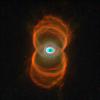
|
-
PIA14442:
-
Hubble Finds an Hourglass Nebula around a Dying Star
Full Resolution:
TIFF
(4.917 MB)
JPEG
(194.2 kB)
|

|
1996-01-29 |
Jupiter
|
Galileo
|
Solid-State Imaging
|
1600x1250x1 |
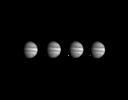
|
-
PIA00139:
-
Comet Shoemaker-Levy 9 Fragment W Impact With Jupiter
Full Resolution:
TIFF
(93.2 kB)
JPEG
(37.14 kB)
|

|
1997-07-04 |
Mars
|
Mars Global Surveyor (MGS)
|
Mars Orbiter Camera (MOC)
|
640x480x1 |
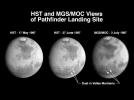
|
-
PIA00607:
-
Hubble and Mars Global Surveyor Views of Dust Storm on Mars
Full Resolution:
TIFF
(86.26 kB)
JPEG
(27.45 kB)
|

|
1997-09-07 |
Io
|
Galileo
|
Solid-State Imaging
|
2010x1640x3 |
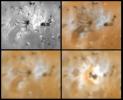
|
-
PIA00709:
-
Massive Resurfacing of the Ionian Volcano Ra Patera
Full Resolution:
TIFF
(5.755 MB)
JPEG
(211.6 kB)
|

|
1997-09-08 |
Io
|
Galileo
|
Solid-State Imaging
|
2600x1150x3 |
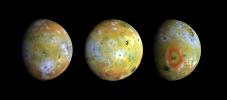
|
-
PIA00292:
-
Three Views of Io
Full Resolution:
TIFF
(3.931 MB)
JPEG
(118.1 kB)
|

|
1997-09-10 |
Mars
|
Mars Global Surveyor (MGS)
|
Mars Orbiter Camera (MOC)
|
512x512x1 |
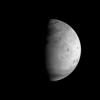
|
-
PIA00929:
-
MGS Approach Image - 172.4° W Longitude
Full Resolution:
TIFF
(42.96 kB)
JPEG
(8.111 kB)
|

|
1997-09-23 |
Jupiter
|
Galileo
|
Photopolarimeter Subsystem
|
807x700x3 |
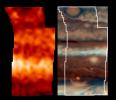
|
-
PIA00730:
-
Jupiter's Temperatures--Broad Latitude
Full Resolution:
TIFF
(1.011 MB)
JPEG
(42.99 kB)
|

|
1997-09-23 |
Jupiter
|
Galileo
|
Solid-State Imaging
|
712x715x3 |
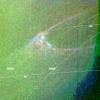
|
-
PIA00603:
-
False Color Aurora
Full Resolution:
TIFF
(1.705 MB)
JPEG
(98.67 kB)
|

|
1997-09-24 |
Jupiter
|
Galileo
|
Photopolarimeter Subsystem
|
585x376x3 |
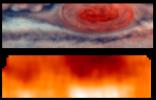
|
-
PIA00731:
-
Jovian Temperatures--Highest Resolution
Full Resolution:
TIFF
(447.1 kB)
JPEG
(17.9 kB)
|

|
1997-10-10 |
|
Hubble Space Telescope
|
|
3000x2000x3 |
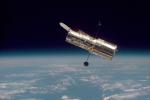
|
-
PIA18165:
-
Hubble Against Earth's Horizon (1997)
Full Resolution:
TIFF
(18.01 MB)
JPEG
(297.5 kB)
|

|
1997-11-17 |
Io
|
Galileo
|
Solid-State Imaging
|
1401x1938x3 |

|
-
PIA01081:
-
Color Mosaic and Active Volcanic Plumes on Io
Full Resolution:
TIFF
(4.933 MB)
JPEG
(226.2 kB)
|

|
1998-03-26 |
Io
|
Galileo
|
Solid-State Imaging
|
1000x800x3 |
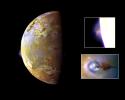
|
-
PIA00703:
-
Active Volcanic Plumes on Io
Full Resolution:
TIFF
(817.7 kB)
JPEG
(42.25 kB)
|

|
1998-03-28 |
Pluto
|
Hubble Space Telescope
|
Faint Object Camera
|
2573x1945x1 |
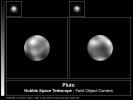
|
-
PIA00825:
-
The Surface of Pluto
Full Resolution:
TIFF
(591.8 kB)
JPEG
(196.1 kB)
|

|
1998-03-28 |
Pluto
|
Hubble Space Telescope
|
Faint Object Camera
|
2813x1737x1 |
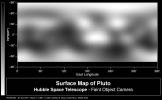
|
-
PIA00826:
-
Map of Pluto's Surface
Full Resolution:
TIFF
(1.149 MB)
JPEG
(231.7 kB)
|

|
1998-03-28 |
Pluto
|
Hubble Space Telescope
|
Faint Object Camera
|
950x494x3 |
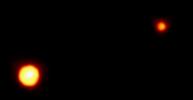
|
-
PIA00827:
-
Hubble Portrait of the "Double Planet" Pluto & Charon
Full Resolution:
TIFF
(123.4 kB)
JPEG
(10.7 kB)
|

|
1998-05-02 |
Mars
|
Hubble Space Telescope
|
WFPC2
|
2400x3000x3 |

|
-
PIA01244:
-
Decay of a Martian Dust Storm
Full Resolution:
TIFF
(11.14 MB)
JPEG
(411 kB)
|

|
1998-05-02 |
Mars
|
Hubble Space Telescope
|
WFPC2
|
2400x3000x3 |

|
-
PIA01245:
-
Hubble's Look at Mars Shows Canyon Dust Storm, Cloudy Conditions for Pathfinder Landing
Full Resolution:
TIFF
(9.466 MB)
JPEG
(377.4 kB)
|

|
1998-05-02 |
Mars
|
Hubble Space Telescope
|
WFPC2
|
3000x2400x3 |
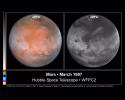
|
-
PIA01246:
-
Comparison View of Mars Cloud Cover
Full Resolution:
TIFF
(6.831 MB)
JPEG
(373.6 kB)
|

|
1998-05-02 |
Mars
|
Hubble Space Telescope
|
WFPC2
|
3000x2250x3 |
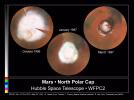
|
-
PIA01247:
-
Seasonal Changes in Mars' North Polar Ice Cap
Full Resolution:
TIFF
(6.358 MB)
JPEG
(308.6 kB)
|

|
1998-05-02 |
Mars
|
Hubble Space Telescope
|
WFPC2
|
2400x3000x3 |

|
-
PIA01248:
-
Four Views of Mars in Northern Summer
Full Resolution:
TIFF
(11.49 MB)
JPEG
(413.8 kB)
|

|
1998-05-02 |
Mars
|
Hubble Space Telescope
|
WFPC2
|
335x335x3 |
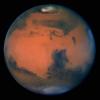
|
-
PIA01249:
-
Hubble's Sharpest View Of Mars
Full Resolution:
TIFF
(184.1 kB)
JPEG
(10.13 kB)
|

|
1998-05-02 |
Mars
|
Hubble Space Telescope
|
WFPC2
|
2850x2025x3 |
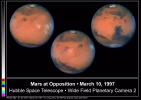
|
-
PIA01250:
-
Hubble Captures A Full Rotation Of Mars
Full Resolution:
TIFF
(6.68 MB)
JPEG
(337.5 kB)
|

|
1998-05-02 |
Mars
|
Hubble Space Telescope
|
WFPC2
|
2061x2701x3 |

|
-
PIA01251:
-
Springtime Dust Storm Swirls at Martian North Pole
Full Resolution:
TIFF
(6.992 MB)
JPEG
(317.1 kB)
|

|
1998-05-02 |
Mars
|
Hubble Space Telescope
|
WFPC2
|
800x525x3 |
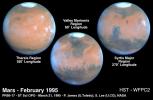
|
-
PIA01252:
-
Mars At Opposition
Full Resolution:
TIFF
(690.9 kB)
JPEG
(45.74 kB)
|

|
1998-05-02 |
Mars
|
Hubble Space Telescope
|
WFPC2
|
800x800x3 |
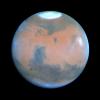
|
-
PIA01253:
-
Springtime on Mars: Hubble's Best View of the Red Planet
Full Resolution:
TIFF
(927.6 kB)
JPEG
(30.76 kB)
|

|
1998-05-02 |
Jupiter
|
Hubble Space Telescope
|
WFPC2
|
795x900x3 |

|
-
PIA01254:
-
Hubble Provides Complete View of Jupiter's Auroras
Full Resolution:
TIFF
(1.387 MB)
JPEG
(114 kB)
|

|
1998-05-02 |
Jupiter
|
Hubble Space Telescope
|
WFPC2
|
1152x860x3 |
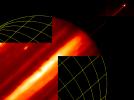
|
-
PIA01255:
-
Hubble Provides Infrared View of Jupiter's Moon, Ring, and Clouds
Full Resolution:
TIFF
(645.9 kB)
JPEG
(67.7 kB)
|

|
1998-05-02 |
Jupiter
|
Hubble Space Telescope
|
WFPC2
|
720x900x3 |

|
-
PIA01256:
-
Hubble Captures Volcanic Eruption Plume From Io
Full Resolution:
TIFF
(1.097 MB)
JPEG
(65.49 kB)
|

|
1998-05-02 |
Jupiter
|
Hubble Space Telescope
|
WFPC2
|
2069x2489x3 |

|
-
PIA01257:
-
Hubble Images Reveal Jupiter's Auroras
Full Resolution:
TIFF
(6.679 MB)
JPEG
(483.2 kB)
|

|
1998-05-02 |
Jupiter
|
Hubble Space Telescope
|
WFPC2
|
720x600x1 |
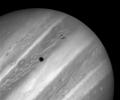
|
-
PIA01258:
-
Rare Hubble Portrait of Io and Jupiter
Full Resolution:
TIFF
(305.8 kB)
JPEG
(28.52 kB)
|

|
1998-05-02 |
Jupiter
|
Hubble Space Telescope
|
WFPC2
|
850x490x3 |
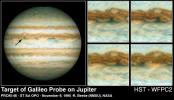
|
-
PIA01259:
-
Hubble Views the Galileo Probe Entry Site on Jupiter
Full Resolution:
TIFF
(993.4 kB)
JPEG
(64.05 kB)
|

|
1998-05-02 |
Jupiter
|
Hubble Space Telescope
|
WFPC2
|
800x600x3 |
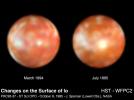
|
-
PIA01260:
-
Hubble Discovers Bright New Spot on Io
Full Resolution:
TIFF
(604.4 kB)
JPEG
(33.67 kB)
|

|
1998-05-02 |
Jupiter
|
Hubble Space Telescope
|
WFPC2
|
600x700x3 |

|
-
PIA01261:
-
Hubble Gallery of Jupiter's Galilean Satellites
Full Resolution:
TIFF
(527.3 kB)
JPEG
(44.81 kB)
|

|
1998-05-02 |
Jupiter
|
Hubble Space Telescope
|
WFPC2
|
800x800x3 |
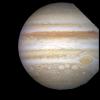
|
-
PIA01262:
-
Hubble Tracks Jupiter Storms
Full Resolution:
TIFF
(1.085 MB)
JPEG
(40.51 kB)
|

|
1998-05-02 |
Jupiter
|
Hubble Space Telescope
|
WFPC2
|
750x700x3 |
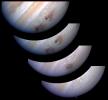
|
-
PIA01263:
-
Jupiter G Impact Evolution
Full Resolution:
TIFF
(752.8 kB)
JPEG
(31.92 kB)
|

|
1998-05-02 |
Jupiter
|
Hubble Space Telescope
|
WFPC2
|
830x568x3 |
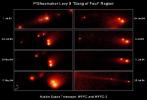
|
-
PIA01264:
-
Evolution of the P/Shoemaker-Levy 9 "Gang of Four" Region
Full Resolution:
TIFF
(543.5 kB)
JPEG
(69.45 kB)
|

|
1998-05-02 |
Jupiter
|
Hubble Space Telescope
|
WFPC2
|
800x600x1 |
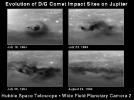
|
-
PIA01265:
-
Month-long Evolution of the D/G Jupiter Impact Sites from Comet P/Shoemaker-Levy 9
Full Resolution:
TIFF
(226.8 kB)
JPEG
(54.55 kB)
|

|
1998-05-02 |
Jupiter
|
Hubble Space Telescope
|
WFPC2
|
600x854x1 |

|
-
PIA01266:
-
Jupiter's Upper Atmospheric Winds Revealed in Ultraviolet Images by Hubble Telescope
Full Resolution:
TIFF
(239.6 kB)
JPEG
(62.37 kB)
|

|
1998-05-02 |
Jupiter
|
Hubble Space Telescope
|
WFPC2
|
800x600x3 |
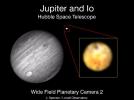
|
-
PIA01267:
-
Hubble Space Telescope Resolves Volcanoes on Io
Full Resolution:
TIFF
(357 kB)
JPEG
(40.59 kB)
|

|
1998-05-05 |
Mars
|
Hubble Space Telescope
|
WFPC2
|
400x200x3 |
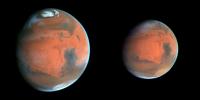
|
-
PIA01243:
-
Hubble Watches the Red Planet as Mars Global Surveyor Begins Aerobraking
Full Resolution:
TIFF
(116.9 kB)
JPEG
(7.111 kB)
|

|
1998-08-02 |
Saturn
|
Hubble Space Telescope
|
WFPC2
|
1125x900x3 |
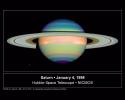
|
-
PIA01268:
-
An Infrared View of Saturn
Full Resolution:
TIFF
(666.6 kB)
JPEG
(58.74 kB)
|

|
1998-08-02 |
Saturn
|
Hubble Space Telescope
|
WFPC2
|
819x900x3 |

|
-
PIA01269:
-
Hubble Provides Clear Images of Saturn's Aurora
Full Resolution:
TIFF
(1.941 MB)
JPEG
(176.9 kB)
|

|
1998-08-02 |
Saturn
|
Hubble Space Telescope
|
WFPC2
|
944x582x3 |
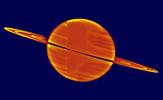
|
-
PIA01270:
-
Sunset on Saturn's Rings
Full Resolution:
TIFF
(446.8 kB)
JPEG
(28.36 kB)
|

|
1998-08-02 |
Saturn
|
Hubble Space Telescope
|
WFPC2
|
630x900x3 |

|
-
PIA01271:
-
Moons Around Saturn
Full Resolution:
TIFF
(806.3 kB)
JPEG
(113.5 kB)
|

|
1998-08-02 |
Saturn
|
Hubble Space Telescope
|
WFPC2
|
1133x900x3 |
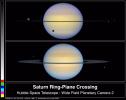
|
-
PIA01272:
-
Edge-on View of Saturn's Rings
Full Resolution:
TIFF
(675.7 kB)
JPEG
(76.35 kB)
|

|
1998-08-02 |
Saturn
|
Hubble Space Telescope
|
WFPC2
|
892x459x1 |
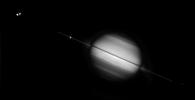
|
-
PIA01273:
-
Hubble again views Saturn's Rings Edge-on
Full Resolution:
TIFF
(53.74 kB)
JPEG
(9.671 kB)
|

|
1998-08-02 |
Saturn
|
Hubble Space Telescope
|
WFPC2
|
550x850x1 |

|
-
PIA01274:
-
Hubble Discovery Image of New Moon Orbiting Saturn
Full Resolution:
TIFF
(234.7 kB)
JPEG
(49.62 kB)
|

|
1998-08-02 |
Saturn
|
Hubble Space Telescope
|
WFPC2
|
600x750x1 |

|
-
PIA01275:
-
Saturn's Rings Edge-on
Full Resolution:
TIFF
(149.8 kB)
JPEG
(29.58 kB)
|

|
1998-08-02 |
Saturn
|
Hubble Space Telescope
|
WFPC2
|
600x800x1 |

|
-
PIA01276:
-
Hubble Views Saturn Ring-Plane Crossing
Full Resolution:
TIFF
(129.6 kB)
JPEG
(30.62 kB)
|

|
1998-08-02 |
Saturn
|
Hubble Space Telescope
|
WFPC2
|
600x800x1 |

|
-
PIA01277:
-
Hubble Views Saturn Ring-Plane Crossing (Satellites Labeled)
Full Resolution:
TIFF
(153.2 kB)
JPEG
(39 kB)
|

|
1998-08-02 |
Uranus
|
Hubble Space Telescope
|
WFPC2
|
1125x900x3 |
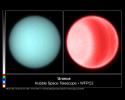
|
-
PIA01279:
-
Hubble Spots Northern Hemispheric Clouds on Uranus
Full Resolution:
TIFF
(1.128 MB)
JPEG
(72.31 kB)
|

|
1998-08-02 |
Uranus
|
Hubble Space Telescope
|
WFPC2
|
450x293x3 |
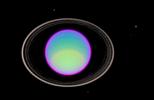
|
-
PIA01280:
-
Hubble Captures Detailed Image of Uranus' Atmosphere
Full Resolution:
TIFF
(103 kB)
JPEG
(10.02 kB)
|

|
1998-08-02 |
Uranus
|
Hubble Space Telescope
|
WFPC2
|
490x512x1 |

|
-
PIA01281:
-
Hubble Observes the Moons and Rings of Uranus
Full Resolution:
TIFF
(15.63 kB)
JPEG
(9.077 kB)
|

|
1998-08-02 |
Uranus
|
Hubble Space Telescope
|
WFPC2
|
600x800x1 |

|
-
PIA01282:
-
Hubble Observes the Planet Uranus
Full Resolution:
TIFF
(192.2 kB)
JPEG
(49.21 kB)
|

|
1998-08-02 |
Uranus
|
Hubble Space Telescope
|
WFPC2
|
737x256x1 |
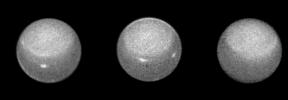
|
-
PIA01283:
-
Hubble the Rotation of Uranus
Full Resolution:
TIFF
(68.48 kB)
JPEG
(13.52 kB)
|

|
1998-08-02 |
Neptune
|
Hubble Space Telescope
|
WFPC2
|
1152x710x3 |
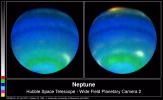
|
-
PIA01284:
-
Neptune in Primary Colors
Full Resolution:
TIFF
(1.179 MB)
JPEG
(69.37 kB)
|

|
1998-08-02 |
Neptune
|
Hubble Space Telescope
|
WFPC2
|
800x500x3 |
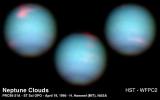
|
-
PIA01285:
-
Hubble's View of Neptune
Full Resolution:
TIFF
(625.7 kB)
JPEG
(25.5 kB)
|

|
1998-08-02 |
Neptune
|
Hubble Space Telescope
|
WFPC2
|
800x450x1 |
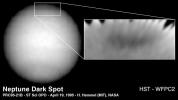
|
-
PIA01286:
-
Hubble Finds New Dark Spot on Neptune
Full Resolution:
TIFF
(140 kB)
JPEG
(26.2 kB)
|

|
1998-08-02 |
Neptune
|
Hubble Space Telescope
|
WFPC2
|
510x259x3 |
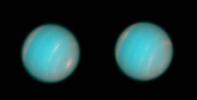
|
-
PIA01287:
-
Hubble Space Telescope Wide Field Planetary Camera 2 Observations of Neptune
Full Resolution:
TIFF
(103 kB)
JPEG
(7.186 kB)
|

|
1998-08-02 |
Hyakutake
|
Hubble Space Telescope
|
WFPC2
|
991x486x3 |
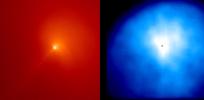
|
-
PIA01288:
-
Comet Hyakutake C/1996 B2
Full Resolution:
TIFF
(1.005 MB)
JPEG
(29.38 kB)
|

|
1998-08-02 |
Hale-Bopp
|
Hubble Space Telescope
|
WFPC2
|
1152x825x3 |
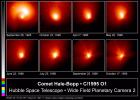
|
-
PIA01289:
-
Hubble Images of Comet Hale-Bopp
Full Resolution:
TIFF
(1.289 MB)
JPEG
(124.7 kB)
|

|
1998-08-03 |
Hyakutake
|
Hubble Space Telescope
|
WFPC2
|
1152x893x3 |
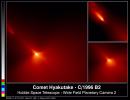
|
-
PIA01290:
-
Hubble Probes Inner Region of Comet Hyakutake
Full Resolution:
TIFF
(1.269 MB)
JPEG
(77.61 kB)
|

|
1998-08-03 |
Hale-Bopp
|
Hubble Space Telescope
|
WFPC2
|
800x465x3 |
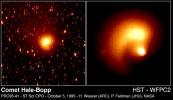
|
-
PIA01291:
-
Hubble Sees Material Ejected From Comet Hale-Bopp
Full Resolution:
TIFF
(568.3 kB)
JPEG
(47.2 kB)
|

|
1998-09-15 |
J Rings
|
Galileo
|
Solid-State Imaging
|
2560x1920x3 |
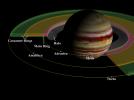
|
-
PIA01627:
-
Jupiter's Inner Satellites and Ring Components
Full Resolution:
TIFF
(2.915 MB)
JPEG
(196.2 kB)
|

|
1998-09-15 |
J Rings
|
Galileo
|
Solid-State Imaging
|
1800x2700x3 |

|
-
PIA01628:
-
Jupiter's Main and Gossamer Ring Structures
Full Resolution:
TIFF
(1.874 MB)
JPEG
(141.2 kB)
|

|
1998-09-26 |
Saturn
|
Hubble Space Telescope
|
WFPC2
|
782x540x3 |
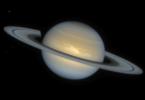
|
-
PIA01464:
-
Hubble Observes a New Saturn Storm
Full Resolution:
TIFF
(312.8 kB)
JPEG
(16.72 kB)
|

|
1998-09-26 |
Titan
|
Hubble Space Telescope
|
WFPC2
|
600x750x3 |

|
-
PIA01465:
-
Hubble Observes Surface of Titan
Full Resolution:
TIFF
(564.6 kB)
JPEG
(37.66 kB)
|

|
1998-10-14 |
Jupiter
|
Galileo
Hubble Space Telescope
|
|
850x950x3 |

|
-
PIA01477:
-
Jupiter's White Ovals
Full Resolution:
TIFF
(648.3 kB)
JPEG
(32.09 kB)
|

|
1999-01-06 |
|
Hubble Space Telescope
|
WFPC2
|
1215x1241x3 |

|
-
PIA14443:
-
Looking Down a Barrel of Gas at a Doomed Star
Full Resolution:
TIFF
(4.525 MB)
JPEG
(65.37 kB)
|

|
1999-05-18 |
Venus
|
Hubble Space Telescope
|
WFPC2
|
170x248x3 |

|
-
PIA01544:
-
Venus Cloud Tops Viewed by Hubble
Full Resolution:
TIFF
(48.41 kB)
JPEG
(3.494 kB)
|

|
1999-05-21 |
Moon
|
Hubble Space Telescope
|
WFPC2
|
1125x754x1 |
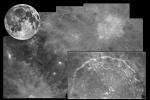
|
-
PIA01541:
-
Crater Copernicus
Full Resolution:
TIFF
(664 kB)
JPEG
(100.7 kB)
|

|
1999-05-21 |
Mars
|
Hubble Space Telescope
|
WFPC2
|
2827x1723x3 |
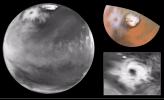
|
-
PIA01545:
-
Hubble Views Colossal Polar Cyclone on Mars
Full Resolution:
TIFF
(5.289 MB)
JPEG
(246.7 kB)
|

|
1999-05-21 |
Io
|
Hubble Space Telescope
|
WFPC2
|
3000x1930x3 |
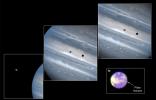
|
-
PIA01540:
-
Hubble Clicks Images of Io Sweeping Across Jupiter
Full Resolution:
TIFF
(6.217 MB)
JPEG
(285.7 kB)
|

|
1999-05-21 |
Mars
|
Hubble Space Telescope
|
WFPC2
|
3000x1850x3 |
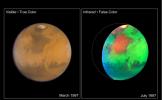
|
-
PIA01543:
-
Martian Colors Provide Clues About Martian Water
Full Resolution:
TIFF
(5.11 MB)
JPEG
(230.4 kB)
|

|
1999-05-21 |
Neptune
|
Hubble Space Telescope
|
WFPC2
|
720x730x3 |

|
-
PIA01542:
-
Neptune's Stormy Disposition
Full Resolution:
TIFF
(610.8 kB)
JPEG
(37.55 kB)
|

|
1999-05-21 |
Uranus
|
Hubble Space Telescope
|
WFPC2
|
1074x737x3 |
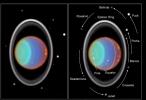
|
-
PIA01278:
-
Hubble Tracks Clouds on Uranus
Full Resolution:
TIFF
(777.6 kB)
JPEG
(60.06 kB)
|

|
1999-08-23 |
Mars
|
Hubble Space Telescope
|
WFPC2
|
800x800x3 |
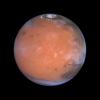
|
-
PIA01590:
-
A Closer Hubble Encounter With Mars - Tharsis
Full Resolution:
TIFF
(783.2 kB)
JPEG
(26.36 kB)
|

|
1999-08-23 |
Mars
|
Hubble Space Telescope
|
WFPC2
|
900x450x3 |
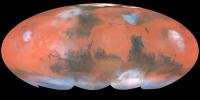
|
-
PIA01588:
-
A Closer Hubble Encounter With Mars - Global View
Full Resolution:
TIFF
(894 kB)
JPEG
(33.76 kB)
|

|
1999-08-23 |
Mars
|
Hubble Space Telescope
|
WFPC2
|
800x800x3 |
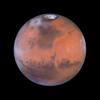
|
-
PIA01589:
-
A Closer Hubble Encounter With Mars - Pathfinder Landing Site
Full Resolution:
TIFF
(833.5 kB)
JPEG
(30.84 kB)
|

|
1999-08-23 |
Mars
|
Hubble Space Telescope
|
WFPC2
|
800x800x3 |
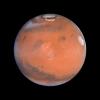
|
-
PIA01591:
-
A Closer Hubble Encounter With Mars - Elysium
Full Resolution:
TIFF
(743.6 kB)
JPEG
(26.86 kB)
|

|
1999-08-23 |
Mars
|
Hubble Space Telescope
|
WFPC2
|
800x800x3 |
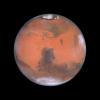
|
-
PIA01592:
-
A Closer Hubble Encounter With Mars - Syrtis Major
Full Resolution:
TIFF
(767.3 kB)
JPEG
(28.49 kB)
|

|
1999-08-23 |
Mars
|
Hubble Space Telescope
|
WFPC2
|
3001x2070x3 |
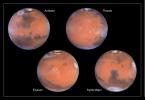
|
-
PIA01587:
-
A Closer Hubble Encounter With Mars - 4 Views
Full Resolution:
TIFF
(7.258 MB)
JPEG
(270.4 kB)
|

|
1999-08-24 |
Jupiter
|
Hubble Space Telescope
|
WFPC2
|
718x716x3 |
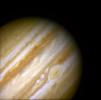
|
-
PIA01594:
-
Hubble Views Ancient Storm in the Atmosphere of Jupiter - Full Disk
Full Resolution:
TIFF
(1.127 MB)
JPEG
(30.32 kB)
|

|
1999-08-24 |
Jupiter
|
Hubble Space Telescope
|
WFPC2
|
321x321x3 |
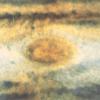
|
-
PIA01595:
-
Hubble Views Ancient Storm in the Atmosphere of Jupiter - May, 1992
Full Resolution:
TIFF
(306.5 kB)
JPEG
(13.83 kB)
|

|
1999-08-24 |
Jupiter
|
Hubble Space Telescope
|
WFPC2
|
321x321x3 |
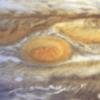
|
-
PIA01596:
-
Hubble Views Ancient Storm in the Atmosphere of Jupiter - July, 1994
Full Resolution:
TIFF
(301.3 kB)
JPEG
(12.4 kB)
|

|
1999-08-24 |
Jupiter
|
Hubble Space Telescope
|
WFPC2
|
321x321x3 |
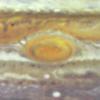
|
-
PIA01597:
-
Hubble Views Ancient Storm in the Atmosphere of Jupiter - August, 1994
Full Resolution:
TIFF
(285.2 kB)
JPEG
(10.9 kB)
|

|
1999-08-24 |
Jupiter
|
Hubble Space Telescope
|
WFPC2
|
321x321x3 |
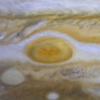
|
-
PIA01598:
-
Hubble Views Ancient Storm in the Atmosphere of Jupiter - February, 1995
Full Resolution:
TIFF
(218.9 kB)
JPEG
(9.833 kB)
|

|
1999-08-24 |
Jupiter
|
Hubble Space Telescope
|
WFPC2
|
321x321x3 |
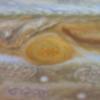
|
-
PIA01599:
-
Hubble Views Ancient Storm in the Atmosphere of Jupiter - October, 1995
Full Resolution:
TIFF
(245 kB)
JPEG
(9.032 kB)
|

|
1999-08-24 |
Jupiter
|
Hubble Space Telescope
|
WFPC2
|
321x321x3 |
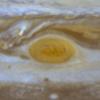
|
-
PIA02400:
-
Hubble Views Ancient Storm in the Atmosphere of Jupiter - October, 1996
Full Resolution:
TIFF
(219.7 kB)
JPEG
(9.823 kB)
|

|
1999-08-24 |
Jupiter
|
Hubble Space Telescope
|
WFPC2
|
321x321x3 |
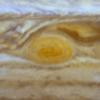
|
-
PIA02401:
-
Hubble Views Ancient Storm in the Atmosphere of Jupiter - April, 1997
Full Resolution:
TIFF
(217.3 kB)
JPEG
(10.36 kB)
|

|
1999-08-24 |
Jupiter
|
Hubble Space Telescope
|
WFPC2
|
321x321x3 |
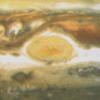
|
-
PIA02402:
-
Hubble Views Ancient Storm in the Atmosphere of Jupiter - June, 1999
Full Resolution:
TIFF
(258.3 kB)
JPEG
(11.79 kB)
|

|
1999-08-24 |
Jupiter
|
Hubble Space Telescope
|
WFPC2
|
2401x2870x3 |

|
-
PIA01593:
-
Hubble Views Ancient Storm in the Atmosphere of Jupiter - Montage
Full Resolution:
TIFF
(14.35 MB)
JPEG
(423.5 kB)
|

|
1999-12-01 |
Doradus Nebula
|
Hubble Space Telescope
|
WFPC2
|
2508x1790x3 |
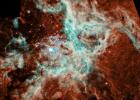
|
-
PIA04200:
-
Doradus Nebula
Full Resolution:
TIFF
(12.24 MB)
JPEG
(608.9 kB)
|

|
1999-12-01 |
Globular cluster M22
|
Hubble Space Telescope
|
WFPC2
|
514x600x3 |

|
-
PIA04202:
-
Globular Cluster M22
Full Resolution:
TIFF
(926.4 kB)
JPEG
(94.12 kB)
|

|
1999-12-01 |
mysterious object
|
Hubble Space Telescope
|
WFPC2
|
3000x2400x3 |
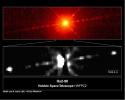
|
-
PIA04214:
-
Mysterious object He2-90
Full Resolution:
TIFF
(6.584 MB)
JPEG
(488.7 kB)
|

|
1999-12-01 |
Horsehead Nebula
|
Hubble Space Telescope
|
WFPC2
|
853x620x3 |
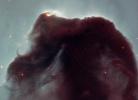
|
-
PIA04215:
-
Horsehead Nebula
Full Resolution:
TIFF
(1.405 MB)
JPEG
(48.75 kB)
|

|
1999-12-01 |
Galaxy NGC 1512
|
Hubble Space Telescope
|
WFPC2
Faint Object Camera
Near Infrared Camera
Multi-Object Spectrometer
|
600x650x3 |

|
-
PIA04219:
-
Galaxy NGC 1512
Full Resolution:
TIFF
(972.2 kB)
JPEG
(50.1 kB)
|

|
1999-12-01 |
Galaxy NGC 4622
|
Hubble Space Telescope
|
WFPC2
|
853x970x3 |

|
-
PIA04224:
-
Backwards Spiral Galaxy
Full Resolution:
TIFF
(2.485 MB)
JPEG
(97.62 kB)
|

|
1999-12-01 |
Globular cluster M4
|
Hubble Space Telescope
|
WFPC2
|
1100x1237x3 |

|
-
PIA04231:
-
White Dwarf Stars
Full Resolution:
TIFF
(3.34 MB)
JPEG
(279.1 kB)
|










































































































